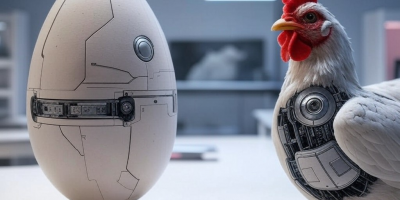One of the common misconceptions about trading and investing is that the Sharpe ratio is not a reliable indicator of risk-adjusted returns because it punishes “good” volatility.
There are many articles in the financial blogosphere and posts on financial social media that claim that the Sortino ratio offers a better measure of risk-adjusted returns because it considers only “bad volatility.”
There is no “good” or “bad” volatility; there is only volatility. More importantly, variance is not additive; it is difficult to separate the “good” volatility from the “bad” volatility. Here is an example.
The chart shows the buy and hold performance of ARKK ETF from inception to May 6, 2024. The bottom charts show the Sharpe, Sortino, and their ratio.
In January 2021, the Sharpe ratio reached 1.36 but the Sortino ratio was 2.21. Then, the ARKK ETF started falling, and by the end of 2022, it had dropped 80% from its all-time highs. A high Sortino is not a guarantee of future performance. Actually, no metric provides a guarantee of future performance. Good volatility is usually mean-reverting.
There are many articles that claim that the Sharpe and Sortino ratios are the same for normally distributed returns. In reality, the Sortino ratio approximates the Sharpe ratio when sufficient samples are available, multiplied by the square root of 2. Let us look at an example below: This is the buy and hold performance of the SPY ETF.
The Sharpe ratio is 0.56 and the square root of 2 approximation for the Sortino value is 0.79. The calculated value (Rf=0) is 0.90. Daily returns are not normally distributed, and the square root of 2 offers only an estimate.
In fact, in the case of SPY ETF, the difference between the average annualized 21-day standard deviations of up and down daily returns is only 0.3%, 9.2% versus 8.9%
During the GFC bear market in 2008, the maximum upside volatility was higher than the maximum downside volatility. The reason for this was the frequent reflex rallies. However, during the 2022 bear market, also referred to as “pain trade,” downside volatility was higher due to the lack of frequent large reflex rallies, or at least as frequent as in the drop of 2008. In 2022, there was only one reflex rally with a gain over 5%, compared to six in 2008.
The conclusion is that while both Sharpe and Sortino ratios provide similar information, the latter can provide a more optimistic measure than the former due to significantly higher values near market tops and before large corrections. The industry widely accepts Sharpe as a better choice, not because it is a better metric.
Subscribe below for notifications of new posts and updates from the Price Action Lab Blog and get the free PDF book “Profitability and Systematic Trading” (Wiley, 2008).
Premium Content
You have immediate access to hundreds of articles when you subscribe. Premium Articles subscribers have immediate access to more than two hundred articles, while All in One subscribers have access to all premium articles, books, premium insights, and market signal content.
Specific disclaimer: This report includes charts that may reference price levels determined by technical and/or quantitative analysis. If market conditions change the price levels or any analysis based on them, we will not update any charts. All charts in this report are for informational purposes only. See the disclaimer for more information.
Disclaimer: No part of the analysis in this blog constitutes a trade recommendation. The past performance of any trading system or methodology is not necessarily indicative of future results. Read the full disclaimer here.
Charting and backtesting program: Amibroker. Data provider: Norgate Data
If you found this article interesting, you may follow this blog via RSS, Email, or Twitter.










